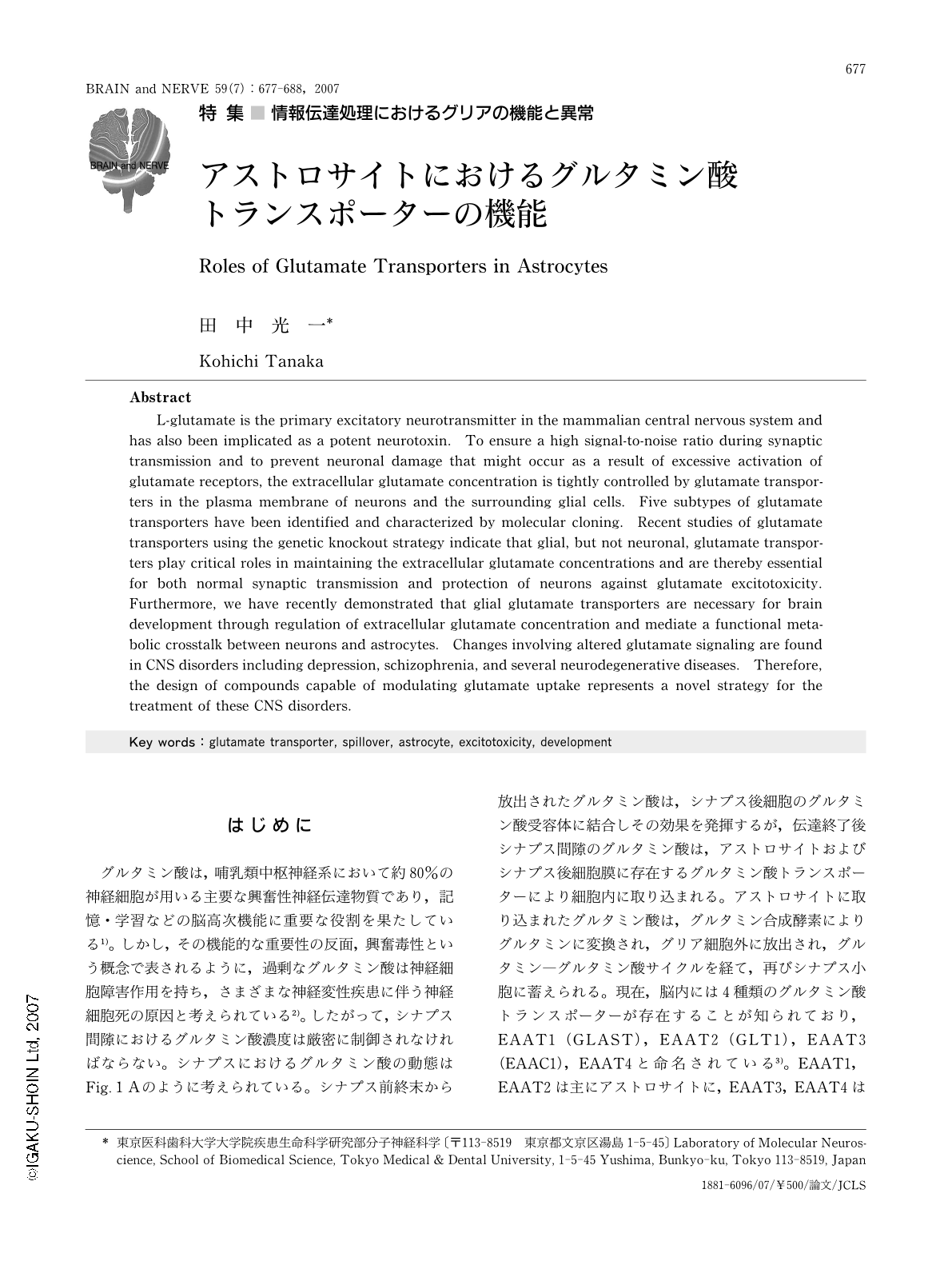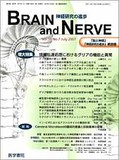Japanese
English
- 有料閲覧
- Abstract 文献概要
- 1ページ目 Look Inside
- 参考文献 Reference
はじめに
グルタミン酸は,哺乳類中枢神経系において約80%の神経細胞が用いる主要な興奮性神経伝達物質であり,記憶・学習などの脳高次機能に重要な役割を果たしている1)。しかし,その機能的な重要性の反面,興奮毒性という概念で表されるように,過剰なグルタミン酸は神経細胞障害作用を持ち,さまざまな神経変性疾患に伴う神経細胞死の原因と考えられている2)。したがって,シナプス間隙におけるグルタミン酸濃度は厳密に制御されなければならない。シナプスにおけるグルタミン酸の動態はFig.1Aのように考えられている。シナプス前終末から放出されたグルタミン酸は,シナプス後細胞のグルタミン酸受容体に結合しその効果を発揮するが,伝達終了後シナプス間隙のグルタミン酸は,アストロサイトおよびシナプス後細胞膜に存在するグルタミン酸トランスポーターにより細胞内に取り込まれる。アストロサイトに取り込まれたグルタミン酸は,グルタミン合成酵素によりグルタミンに変換され,グリア細胞外に放出され,グルタミン―グルタミン酸サイクルを経て,再びシナプス小胞に蓄えられる。現在,脳内には4種類のグルタミン酸トランスポーターが存在することが知られており,EAAT1(GLAST),EAAT2(GLT1),EAAT3(EAAC1),EAAT4と命名されている3)。EAAT1,EAAT2は主にアストロサイトに,EAAT3,EAAT4は神経細胞に存在する(Fig.1B)4)。近年,グルタミン酸トランスポーター欠損マウスの解析を通じ,グルタミン酸トランスポーターの各サブタイプの機能的役割が明らかになりつつある4)。本稿では,グリア型グルタミン酸トランスポーターのシナプス伝達・神経細胞の保護・脳形成における役割を概説する。
Abstract
L-glutamate is the primary excitatory neurotransmitter in the mammalian central nervous system and has also been implicated as a potent neurotoxin. To ensure a high signal-to-noise ratio during synaptic transmission and to prevent neuronal damage that might occur as a result of excessive activation of glutamate receptors, the extracellular glutamate concentration is tightly controlled by glutamate transporters in the plasma membrane of neurons and the surrounding glial cells. Five subtypes of glutamate transporters have been identified and characterized by molecular cloning. Recent studies of glutamate transporters using the genetic knockout strategy indicate that glial, but not neuronal, glutamate transporters play critical roles in maintaining the extracellular glutamate concentrations and are thereby essential for both normal synaptic transmission and protection of neurons against glutamate excitotoxicity. Furthermore, we have recently demonstrated that glial glutamate transporters are necessary for brain development through regulation of extracellular glutamate concentration and mediate a functional metabolic crosstalk between neurons and astrocytes. Changes involving altered glutamate signaling are found in CNS disorders including depression, schizophrenia, and several neurodegenerative diseases. Therefore, the design of compounds capable of modulating glutamate uptake represents a novel strategy for the treatment of these CNS disorders.

Copyright © 2007, Igaku-Shoin Ltd. All rights reserved.


